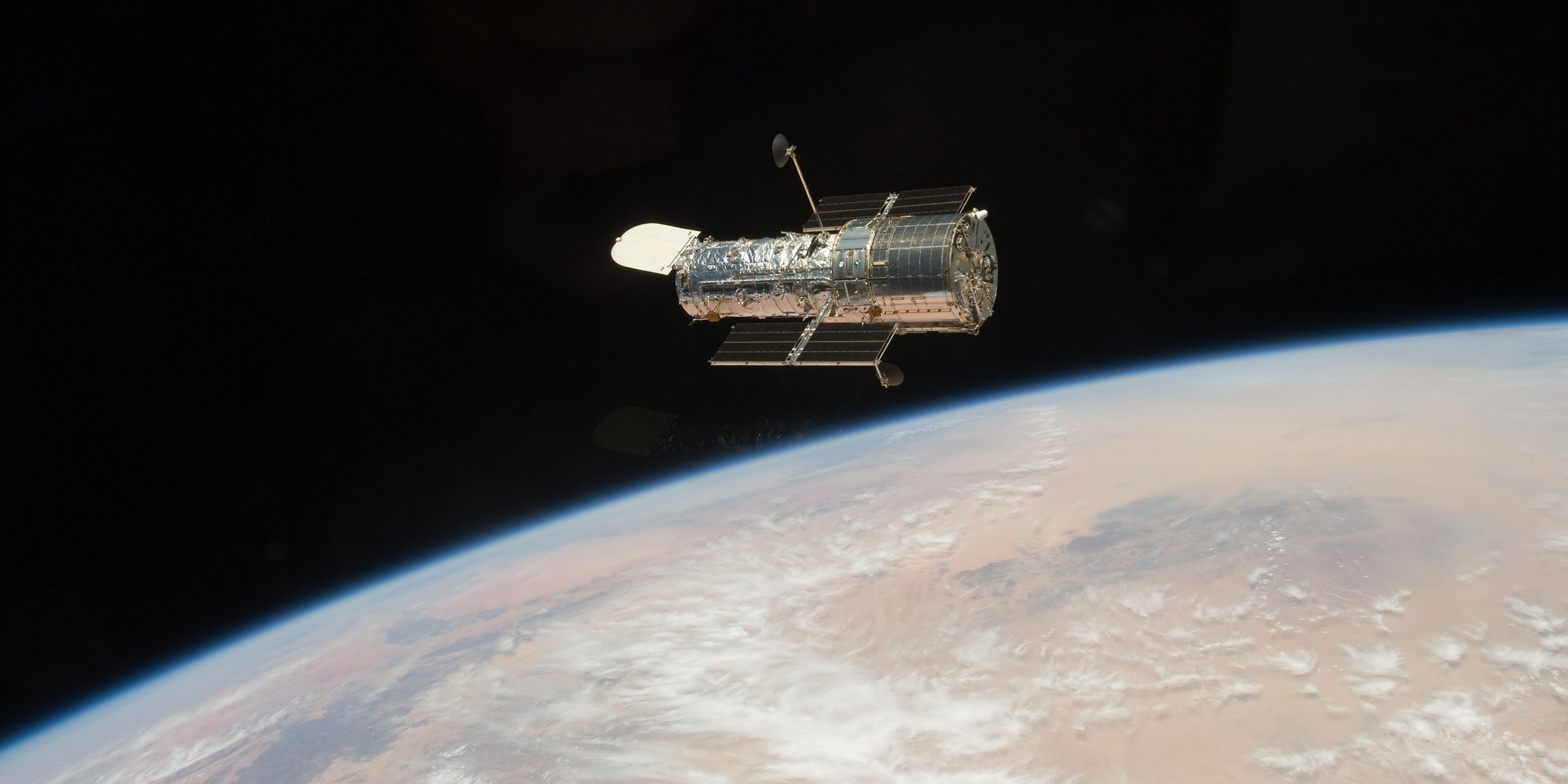Originally published 10 February 1986
For some of us, the most exciting aspect of the space shuttle program was to be the launching of the Hubble Space Telescope later this year. The tragedy at Cape Canaveral will undoubtedly delay that project by many months.
The Hubble Space Telescope (called the HST) will not be as big as some telescopes on the Earth’s surface, but because it will be above the atmosphere it will see things that no Earth-bound telescope can. Not the least of the things astronomers hope to see with the new instrument are those things that cannot be predicted. Delight in the unexpected is part of the lifeblood of science. Almost alone among belief systems, science welcomes the disturbingly new.
Putting the HST into orbit will be neither easy nor cheap. It would be nice if we could probe Nature’s secrets without the risks and expenses associated with such complex instruments. In a little book published some years ago, called The Anticipation of Nature, Rom Harre reminds us that “easy ways of doing hard things” have tempted scientists as they have tempted all men from time to time. There is always the recurring hope that we can discover truth about the world without “the tedium of inspecting Nature.”
For example, Galileo’s contemporaries had several “easy ways” of making statements about physical reality. The teachings of Aristotle were considered by many to be a reliable guide to truth about the world. The Scriptures were another trustworthy source of physical knowledge. If Joshua commanded the Sun to stand still at the Battle of Jericho, then it could not be doubted that it was the Sun that moved, rather than the Earth — the new theories of Copernicus notwithstanding.
Telescopes and gut feelings
When Galileo turned his new telescope on the heavens he saw things that rocked natural philosophy to its foundations. Not even Galileo could have anticipated the myriad stars of the Milky Way revealed by his instrument, or the mountains and valleys of the Moon, or the satellites of Jupiter. Everything he saw reinforced his conviction that Copernicus was right about the motion of the Earth and the central stability of the Sun. Galileo never tired of pointing out that the evidence of his telescope carried more weight than a literal interpretation of Scriptures or the speculations of philosophers.
It is less widely known that Galileo himself took shortcuts to the “truth.” Some of his statements about the world were based as much on his own gut feeling about the way the world should be as on experiment. Many of Galileo’s shortcuts were inspired and met the test of time. Other shortcuts led him down blind alleys. His belief that he had observed seas on the Moon, for example, was later disproved by a closer inspection.
Even the greatest scientists sometimes fall victim to falsely anticipating nature. When Einstein’s theory of general relativity predicted that the universe should be expanding or contracting, he gratuitously added a term to the equations to suppress the instability. It was inconceivable to Einstein that the universe should be other than steady and eternal. The conviction of stability came crashing down in 1929, when Edwin Hubble announced startling observations made with the new 100-inch telescope on Mt. Wilson in California: The galaxies were in fact rushing outwards.
Einstein’s error
Einstein promptly went to California to confer with Hubble. With his wife Elsa, he was given a tour of the observatory, and it was explained to them how the huge instrument was used for determining the structure of the universe. “Well, well,” said Elsa, “my husband does that on the back of an old envelope.”
It is part of the mystery of mind and Nature that the backs of envelopes can be vehicles of discovery. But Einstein knew that the evidence of observation was the final arbiter of truth. He was quick to admit his error and deleted the offending term from his theory.
Like Galileo’s instrument and the Mt. Wilson telescope, the HST will almost certainly reveal things about the universe that run counter to some of our most cherished beliefs. Astronomers will be pleased if the new telescope confirms their speculative theories, but they will also be disappointed if there are not a few unsettling surprises. It is the glory of science that part of its value system is a willingness to accept the unacceptable when Nature instructs us that it is time to do so.
Scientific theories are human constructions. Some theories have a generality and a beauty that make them seem irresistibly true. But all past attempts to make generality or beauty the sole warranty of truth have failed. The “tedium of inspection” is essential. As Rom Harre says, “the anticipation of Nature is a fraud.”
In the aftermath of the Challenger disaster, the launch of the Hubble Space Telescope was delayed until 1990. In the decades since, the HST has contributed countless “unexpected delights” to our understanding of the universe. ‑Ed.



